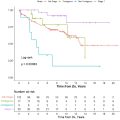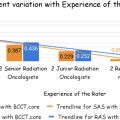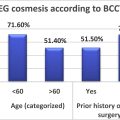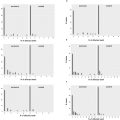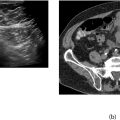Abstract
Rationale and objectives
Dual-energy CT (DECT) plays an important role in the evaluation of gout based on its ability to identify monosodium urate (MSU) crystals. Post-processing of DECT includes selection of a minimum Hounsfield unit (HU) threshold, currently set at 150 HU. Adjustments to this setting will affect the amount of MSU that is identified, with lower thresholds identifying more true and false positive MSU. The purpose of this study is to assess the performance of several HU thresholds.
Materials and methods
134 DECTs were reprocessed with minimum HU thresholds set to 150, 140, 130, and 120 HU. Volume of MSU detected was compared across thresholds. Subsequently, readers reviewed 3D axial images from 109 cases at 150, 130, and 120 HU thresholds. For each case, the reader made a diagnosis of gout, rated their confidence, and reported the location of MSU deposits.
Results
Mean MSU volume detected was as follows: 0.160 at 150, 0.205 at 140, 0.276 at 130, and 0.444 at 120 HU. Based on reader diagnosis, there was no significant difference in sensitivity for the diagnosis of gout between the 150 (68.8%), 130 (71.8%), and 120 (69.7%) HU thresholds (p = 0.653). Specificity was higher at 150 HU (65.4%) than at 130 (58.4%) and 120 (52.2%), (p < 0.001). Mean reader confidence was 90.1 for 150 HU, 79.9 for 130 HU, and 74.0 for 120 HU (p < 0.001).
Conclusion
Between the 150, 130, and 120 HU thresholds, 150 HU performed best overall for making the diagnosis of gout on DECT. Further research is needed to determine if there is utility for utilizing lower threshold settings for certain clinical scenarios.
Highlights
- •
No significant difference in diagnostic sensitivity was seen between the three HU thresholds.
- •
The 120 HU threshold had the lowest specificity and the highest number of artifactual MSU deposits.
- •
Readers had highest confidence in their diagnosis using the 150 HU threshold.
1
Introduction
Gout is the most common crystalline arthropathy, characterized by hyperuricemia leading to the deposition of monosodium urate (MSU) crystals in soft tissues and resultant episodic inflammation and pain [ , ]. The presence of MSU crystals in joint aspirate is considered the gold standard for diagnosis, however aspiration is an invasive procedure and may be particularly difficult in patients with small volumes of joint fluid [ ]. Additionally, when synovial fluid is obtained, crystals may not be seen in up to 25% of cases [ ]. Systemic hyperuricemia shows even higher false negative rates in acute gout attacks, up to 42% [ ].
Given these diagnostic challenges, imaging plays an important role in the diagnosis of gout [ , ]. Dual-energy CT (DECT) is well established as a highly accurate diagnostic tool for the identification of MSU deposition and holds significant weight in the American College of Rheumatology/European League Against Rheumatism guidelines [ , ]. These deposits can be seen around joints, in tendons, and in the soft tissues [ ]. Studies have reported sensitivities of 78–100% and specificities of 78–100% of DECT using standard techniques [ , , ]. DECT also allows for volumetric measurement of MSU burden, which can be useful for monitoring treatment response [ , , ].
To detect MSU, DECT exploits the difference in photon energy-dependent attenuation between MSU and other tissues [ ]. The typical CT density of gouty tophi is 160–170 Hounsfield Units (HU) [ ]. The DECT algorithm processes image pixels with values above a selected minimum attenuation threshold and color codes MSU according to vendor-specific protocols, often in green. The default number of 150 HU has been recommended by the vendor for this threshold and is used at most institutions.
There are some challenges and limitations to DECT. For example, DECT can have false negatives in very early gout or a first-time attack, when there is insufficient MSU volume or deposits which are too small to be detected [ , , , ]. One study showed considerable drop off in the sensitivity and specificity of DECT for the diagnosis of gout in cases of less than 24 months acuity [ ]. False negative cases may lead to under-treatment and unnecessary suffering of patients with gout. Additionally, there are many well-known artifactual causes of green color-coding, such as in the nail bed, skin surface, vascular calcification, associated with beam hardening artifacts, and submillimeter artifacts [ , ]. Clumps of these submillimeter artifacts are not uncommon, typically in tendons or ligaments, and may result in false positive cases [ ]. False positive cases may lead to improper diagnosis and unnecessary treatment with potential for side effects [ , ].
Given its clinical importance, it is crucial to maximize the sensitivity of DECT for the detection of MSU deposits while minimizing artifact. Only a few studies exist which evaluate alternate HU thresholds for DECT in cases of suspected gout [ , ]. Further study is needed to determine the ideal threshold. The purpose of this study is to compare the sensitivity and specificity between several minimum attenuation settings for dual energy CT post-processing techniques. Secondarily, this study will compare the number and location of true and false positive MSU deposits identified across settings.
2
Materials and Methods
IRB approval was obtained for this retrospective research protocol and the requirement for informed patient consent was waived (protocol ID 20–003826).
Cases were identified from a preexisting research list of patients with suspected gout who had undergone DECT examination as part of routine clinical care. This database included a final diagnosis of gout or no gout for each patient, established by chart review. This chart review used a combination of subspecialty clinical evaluation, aspiration, laboratory values, and available imaging studies including DECT.
All examinations were performed on 2nd generation, dual-source, dual-energy CT scanners (Definition Flash, Siemens Healthineers, Forchheim, Germany). The DECT protocol used at our institution is as follows: tube potentials 80/Sn140 kV (Sn: tin filter), effective mAs 340/170, collimation 40 × 0.6 mm, rotation time 1.0 s, pitch 1.2, slice thickness 0.6 mm, and Q30 kernel. 2D and color-coded 3D images are reconstructed in the axial, coronal, and sagittal planes. At our institution, monosodium urate deposition is displayed as green.
Similar to prior studies, cases were reprocessed with minimum HU thresholds set to 120, 130, 140, and 150 HU(4, 5). Volumetric measurements, which are automatically generated from the dual energy postprocessing, were compared for each case between thresholds. As such, any case with MSU volume detected was considered “positive.” This volumetric diagnosis was compared to the reference standard and accuracy was calculated for each threshold. From these accuracies, three thresholds were selected for further analysis with a retrospective reader study.
The subsequent randomized blinded reader study was conducted in which three readers (FB, GP, KG) performed an independent review of the 3D color-coded images in the axial plane reprocessed at the 120, 130, and 150 HU threshold settings at a diagnostic workstation. These readers were not involved in case identification or the volumetric analysis. Readers all had received subspecialty training in musculoskeletal radiology. The study consisted of three sessions. During a session, the reader was presented with a randomized mix of patients and thresholds, with the same patient seen only once per session. Reading sessions were separated by at least 3 weeks to avoid recall. At each session, the reader provided a diagnosis of “positive” or “negative” for gout. Confidence in the diagnosis was reported using a 0–100 sliding scale. The reader also reported the locations of both true and artifactual green pixels denoting MSU deposition. The final diagnosis was compared to the reference standard. An example reader spreadsheet utilized during case review is shown in Fig. 1 .

3
Statistical methods
Continuous variables were summarized as mean with standard deviation and categorical variables were summarized as total count with percentage. All scans were treated as independent for the analysis, including scans from different body parts within the same patient.
Sensitivity and specificity for binary diagnosis of gout were calculated for each reader at each dose level. These metrics were also calculated for pooled reader data and compared across dose levels using generalized estimating equation (GEE) models to account for clustering effects by reader. Mean diagnosis confidence score was calculated for each reader at each dose level as well as pooled across readers and compared between dose levels using mixed effects linear regression to account for clustering effects by reader. A subanalysis for reader confidence scores was conducted for positive and negative cases separately. Variables related to the location of true MSU deposits and location of false MSU deposits were summarized and compared across dose levels using ordinal logistic regression.
All statistical analysis was completed using R statistical software version 4.2.2 (R Foundation for Statistical Computing, Vienna, Austria). P values < 0.05 were considered statistically significant throughout the analysis.
4
Results
One hundred thirty-four DECTs were included in the volumetric portion of the study. Volumetric data and accuracy at each threshold are displayed in Table 1 . Cases with any MSU detected by the postprocessing algorithm were considered positive. Considering 150 HU as the baseline, the number of cases turning from negative to positive by changing threshold to 140, 130 and 120 HU was 25, 46 and 61, respectively. Based on the similar accuracy between 150 and 140 and overlapping 95% confidence intervals, the 140 threshold was dropped for the second portion of the study.
| Threshold | MSU Volume | Negative cases (n) | Accuracy |
|---|---|---|---|
| 150 | Mean: 0.160 | 62 | 72% |
| SD: 0.463 | |||
| 95% CI: 0.082-0.238 | |||
| 140 | Mean: 0.205 | 37 | 72% |
| SD: 0.548 | |||
| 95% CI: 0.112-0.298 | |||
| 130 | Mean: 0.276 | 16 | 61% |
| SD: 0.649 | |||
| 95% CI: 0.166-0.386 | |||
| 120 | Mean: 0.444 | 1 | 51% |
| SD = 0.785 | |||
| 95% CI: 0.311-0.577 |
Stay updated, free articles. Join our Telegram channel

Full access? Get Clinical Tree




